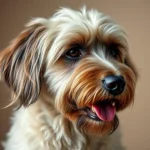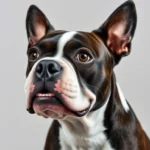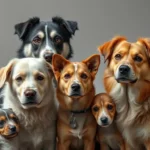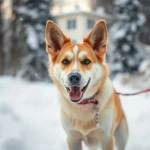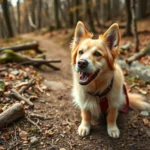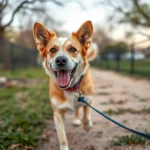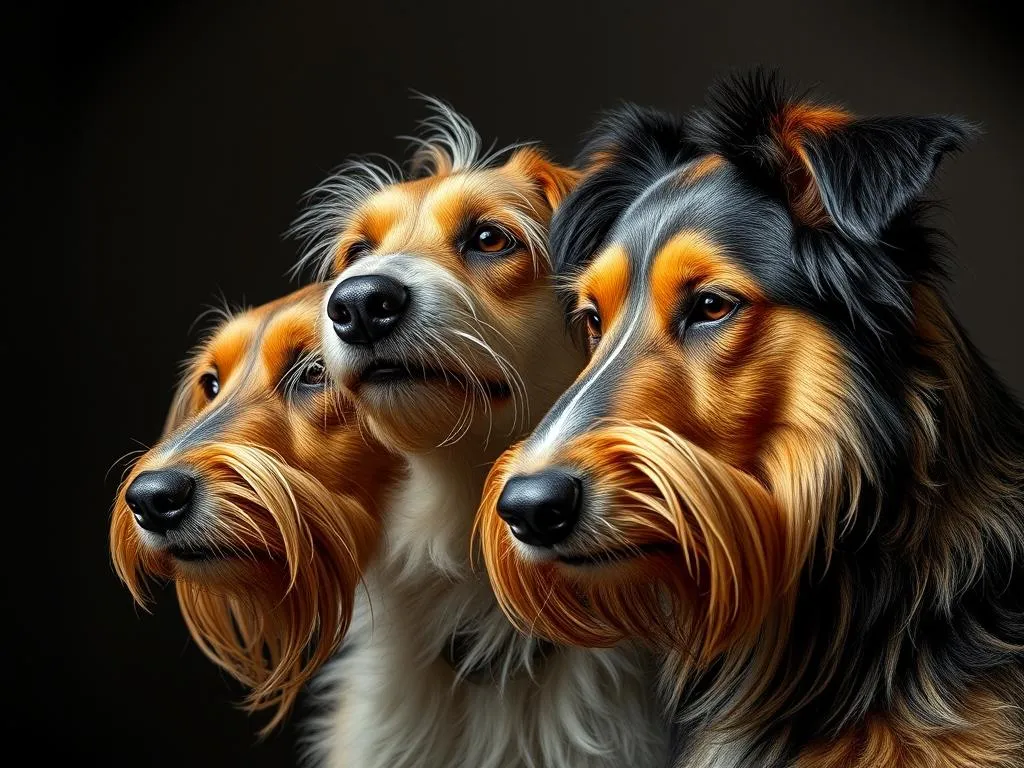
Understanding the world of dogs involves recognizing the diverse traits and characteristics that different breeds exhibit. Among them, long snouted dog breeds stand out not only for their unique physical appearance but also for their charming personalities. These breeds are often characterized by their elongated muzzles, which can be a defining feature. In this article, we will delve into what makes these breeds special, explore popular long snouted breeds, and provide insights on their care, training, and compatibility in family life.
Understanding Long Snouted Dog Breeds
Definition and Characteristics
Long snouted dog breeds typically possess distinct physical traits, including extended snouts and elongated muzzles. This characteristic can be attributed to their ancestry and the specific functions that their shapes serve, such as improved olfactory abilities or speed in various activities. These breeds often exhibit intelligent and energetic temperaments, making them engaging companions.
Commonly, long snouted breeds are known for their agility and inquisitive nature. Many are highly trainable, which can be beneficial for first-time dog owners. This combination of intelligence and physical capability leads to a variety of activities that these dogs can excel in, from agility sports to service roles.
Historical Background
The origins of long snouted dog breeds trace back several centuries, with many breeds evolving to assist humans in various tasks. For instance, the Greyhound was bred for its speed in hunting, while the Dachshund was initially developed to hunt burrowing animals. Over time, these breeds have been selectively bred, enhancing their physical attributes and temperamental qualities to adapt to specific roles and environments.
Understanding the history of these breeds not only helps us appreciate their unique traits but also highlights the importance of responsible breeding and ownership. As these breeds evolve, it is crucial to maintain their health and well-being through proper care and understanding of their needs.
Popular Long Snouted Dog Breeds
Breeds Overview
Several long snouted dog breeds have gained popularity due to their distinctive features and appealing personalities. Below is a brief overview of some of the most well-known breeds:
-
Greyhound: Known for their incredible speed, Greyhounds are gentle giants that thrive on companionship. They have a short coat and require minimal grooming.
-
Dachshund: Often called “wiener dogs,” Dachshunds are playful and curious. Their long bodies and short legs make them unique. They come in three coat types: smooth, longhaired, and wirehaired.
-
Borzoi: This elegant breed boasts a long, narrow snout and a flowing coat. Borzois are known for their grace and are often described as gentle and affectionate.
-
Saluki: Resembling the Greyhound, Salukis are elegant and athletic dogs known for their hunting skills. They have a slender build and require regular exercise.
-
Afghan Hound: Recognized for their long, flowing coat and refined appearance, Afghan Hounds are independent and often aloof. They are also known for their playful nature.
Breed-Specific Traits
Each of these breeds possesses unique characteristics that can influence their suitability for various households.
- Greyhound:
- Size: 60-70 pounds
- Temperament: Calm, friendly, and affectionate
-
Health Issues: Prone to bloat and hip dysplasia
-
Dachshund:
- Size: 16-32 pounds
- Temperament: Curious, brave, and clever
-
Health Issues: Back problems (IVDD) due to their long spine
-
Borzoi:
- Size: 60-105 pounds
- Temperament: Gentle, loyal, and reserved
-
Health Issues: Prone to certain cancers and hip dysplasia
-
Saluki:
- Size: 40-65 pounds
- Temperament: Affectionate and sensitive
-
Health Issues: Prone to hip dysplasia and certain hereditary conditions
-
Afghan Hound:
- Size: 50-65 pounds
- Temperament: Independent, playful, and sometimes aloof
- Health Issues: Prone to hip dysplasia and certain skin conditions
By understanding these breed-specific traits, prospective dog owners can make informed choices that fit their lifestyles and expectations.
Care and Maintenance of Long Snouted Breeds
Nutrition Requirements
Providing a balanced diet is essential for the health of long snouted dog breeds. Each breed may have specific nutritional needs based on size, activity level, and health concerns. Generally, high-quality dog food that meets the AAFCO (Association of American Feed Control Officials) standards is recommended.
For instance, Greyhounds may require a diet tailored to their metabolism, while Dachshunds might benefit from food that supports their back health. Consulting with a veterinarian to create a personalized feeding plan is always advisable.
Exercise and Activity Needs
Most long snouted dog breeds are energetic and require regular physical activity to stay healthy and happy. Daily walks, playtime, and mental stimulation through puzzle toys or training exercises are vital.
- Greyhound: Enjoys short bursts of intense exercise; a few sprint sessions each week are ideal.
- Dachshund: Moderate exercise is necessary to prevent obesity, which can exacerbate back issues.
- Borzoi: Requires ample space to run; they thrive in open areas.
- Saluki: Needs regular exercise due to their high energy levels, making them great companions for active owners.
- Afghan Hound: Enjoys both physical and mental challenges; engaging play is essential.
Grooming and Health Care
Grooming needs vary among long snouted dog breeds, influenced by coat type and shedding patterns.
- Greyhound: Minimal grooming required; occasional baths are sufficient.
- Dachshund: Grooming frequency depends on coat type; longhaired varieties require more care.
- Borzoi: Requires regular brushing to prevent matting of their long fur.
- Saluki: Low grooming needs; occasional brushing will help keep their coat healthy.
- Afghan Hound: High grooming needs due to their long coat; regular brushing and grooming sessions are necessary.
Preventative care, such as regular veterinary check-ups, vaccinations, and dental care, is crucial for maintaining the health of these breeds. Owners should stay vigilant about common health issues that may arise in their chosen breed.
Training Long Snouted Dog Breeds
Basic Training Techniques
Training is an essential part of owning a dog, especially for long snouted breeds known for their intelligence and energy. Early socialization and obedience training help develop well-adjusted companions.
Positive reinforcement methods, such as treats and praise, are highly effective. Consistency is key; establishing clear commands and routines can help reinforce learning.
Behavioral Considerations
Certain behavioral issues may be more prevalent in long snouted dog breeds. For example, Dachshunds can exhibit stubbornness due to their independent nature, while Greyhounds may display a strong prey drive.
Addressing these behaviors early through training and socialization can lead to a well-adjusted family member. Engaging with trainers who specialize in specific breeds can provide valuable insights and support.
Long Snouted Breeds in Family Life
Compatibility with Children and Other Pets
Long snouted dog breeds can be excellent companions for families, but compatibility often depends on the individual dog’s temperament and training. For instance, Greyhounds are typically gentle and patient with children, while Dachshunds can be playful and affectionate.
When introducing a long snouted breed to children or other pets, supervision is critical. Teaching children how to interact safely and respectfully with dogs fosters positive relationships.
Lifestyle Considerations
The living environment can significantly affect the well-being of long snouted dog breeds. While many of these breeds can adapt to apartment living, adequate exercise and mental stimulation are essential.
For instance, Greyhounds can thrive in smaller spaces if they receive regular exercise, while more active breeds like the Saluki may require larger areas to run and play. Understanding the needs of the breed is vital for ensuring a harmonious household.
Conclusion
In summary, long snouted dog breeds offer a unique blend of physical beauty and engaging personalities. By understanding their characteristics, history, and needs, potential dog owners can make informed decisions about which breed may be the best fit for their lifestyle.
Choosing to adopt a long snouted breed comes with responsibilities, including proper care, training, and socialization. With the right approach, these dogs can become cherished family members, enriching lives with their loyalty and companionship.
Final Thoughts
Whether you’re drawn to the speed of a Greyhound, the playful nature of a Dachshund, or the elegance of a Borzoi, each long snouted dog breed brings something special to the table. Before making a commitment, it’s essential to research and understand the breed’s requirements and characteristics thoroughly. Responsible pet ownership leads to fulfilling relationships between dogs and their families, enriching both lives in the process.
